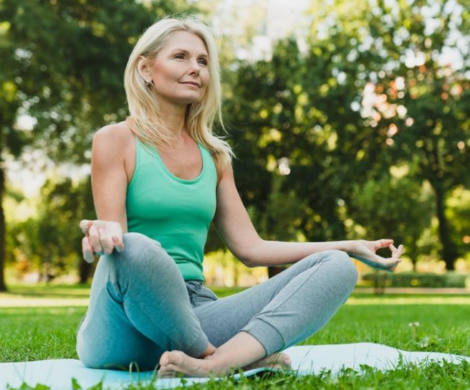Exercising During Menopause: 8 Dos and Don’ts

If you’re wondering whether or not you should be exercising during menopause, the answer is an emphatic yes! In fact, when coupled with the right menopause relief products, long-term exercise routines can actually help address menopause symptoms such as hot flashes and weight gain. Here are eight dos and don’ts for exercising during menopause:
Source: Syda Productions/Shutterstock.com
Do find exercises you enjoy.
Exercise doesn’t have to be a drag. There are dozens of workouts out there and you are bound to find one that you enjoy. Experiment with different types of workouts to see which ones work best for you instead of giving up on exercise altogether. If you don’t like running, then try out aerobic dance classes or swimming, for example. If working out at a gym or in a class with other people around makes you self-conscious, there are plenty of workouts that you can do at home without anyone else around. If you still want instruction, you can stream workouts from the many different online providers now available in the comfort of your own home.
Don’t ignore strength training.
Women are often told to stay away from strength training because it will make them big and bulky. Instead, they are told to focus on cardio, balance, and flexibility. While these are great skills to focus on and should absolutely be part of your exercise routine, you shouldn’t ignore strength training as you enter menopause. As women age, they are prone to both bone and muscle loss, which makes falls and other health issues more likely. Strength training will help fight this age-related decline and help keep your bones and muscles strong. If you don’t want to lift weights, you can do other strength training such as resistance band and bodyweight exercises.
Do pay attention to hot flash triggers.
While a routine of moderate exercise can relieve hot flash symptoms over the long run, very intense exercise that quickly elevates your heart rate and causes sweating can actually trigger a hot flash. If you are experiencing menopause hot flashes, stick with moderate cardiovascular exercise, and don’t forget to warm up and cool down properly to ease into the exercise. You should also wear breathable, moisture-wicking exercise clothing that won’t trap sweat so you don’t get too overheated during the workout. If you feel a hot flash coming on, take a break and cool off a bit before trying to resume exercise.
Source: plprod/Shutterstock.com
Don’t skip rest days.
Rest days are essential to not overworking yourself and making sure that your body has time to recover from all the work that it has been doing. Make sure that you take at least one day off a week, and two if you need it. Rest and recovery will help keep you from burning out and reduce your chances of developing repetitive stress injuries and other issues. You should also take a couple of weeks a year off completely in order to give your body longer breaks and give yourself some time to re-evaluate and reset your workout routine if necessary.
Do consider a workout partner.
Workouts are more fun with a friend! Exercising with someone else will make the time pass faster and help you stay accountable. Try to find a friend who is at a similar level of fitness as you and also interested in the same types of workouts. Make a plan to attend the same classes or stream workouts at the same time. Check in with each other throughout the week to encourage each other and stick with your routines. Even if you don’t like to do the same workouts, it can still help to have a buddy to check in with more generally to help you stay motivated and on track.
Don’t fall into a workout rut.
Once you’ve been exercising for a while, it’s easy to fall into a workout rut. Once you’ve been doing the same thing for a while, the workouts may start to feel repetitive and boring, and you might start to lose your motivation to keep working out. If this sounds familiar, try switching up the types of workouts you are doing to shake yourself out of the rut. You can also vary up your regular workouts by increasing the length, intensity, or number of reps to keep challenging yourself. While it might feel impossible at the beginning, your body will eventually adjust to exercise, so you will have to continually challenge yourself in order to keep seeing results.
Source: michaeljung/Shutterstock.com
Do consider menopause-specific workouts.
Exercise can help address certain physical changes that often occur with menopause. For instance, pelvic muscles often become thinner and weakened during menopause, and doing pelvic floor exercises can help counteract this. Many women also find themselves gaining weight, specifically around their midsection, as menopause causes their metabolism to slow down. Doing the best exercises for a menopause belly can help prevent or reverse some of this weight gain, especially when used in conjunction with a healthy diet.
Don’t forget to drink water.
Hydration is really important for helping to keep hot flashes in check and to prevent discomfort during exercise. Instead of chugging a bunch of water only during your workouts, stay hydrated during the day prior to the workout. Then, during the workout, take small sips of water more frequently so that your body has time to absorb it. Large quantities of water sloshing around in your stomach can make you feel sick during exercise. If you don’t like drinking plain water, try adding an electrolyte powder or infusing it with fruits and vegetables to give it some flavor.
Follow these dos and don’ts to safely (and enjoyably) exercise during menopause. Remember to always check in with your doctor first if you have never exercised before or if you have other health conditions that impact your physical activity.









